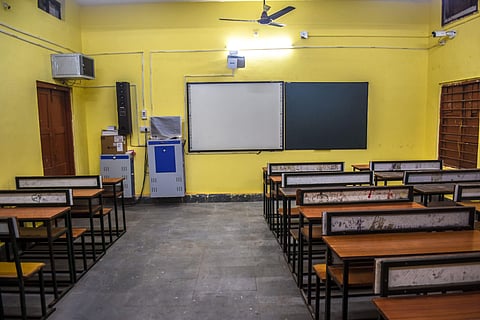

A month after the Delhi school model was covered in The New York Times, an international daily, on August 18, the National Commission for Protection of Child Rights (NCPCR) has released a report on its observations regarding Delhi government schools. It pointed out certain lapses, which include a high number of vacant posts of principals, pupil-to-teacher ratio and dropout ratio, as stated in a report by PTI.
Titled 'Clean Toilets, Inspired Teachers: How India's Capital Is Fixing Its Schools', The New York Times praised the Delhi government's education system, calling it a lifeline for millions of families looking to break the cycle of poverty. Now, the NCPCR in its report said that Delhi has scored below the national average. Further, giving more details, the NCPCR said that the transition rate from primary to upper primary (Class V to VI) was 99.86 per cent and that for elementary to secondary (Class VIII to IX) was 96.77 per cent in 2015-16.
Although the rate increased in the year 2018-19, it is still lower than the transition rate in 2015-16 for both primary and secondary levels, which means not all the children completing primary education enter the upper primary level, it pointed out.
Explaining this situation with an example, the commission said, if in 2016-17, 3,99,916 students enrolled in Class V in Delhi schools, next year in 2017-18, the enrolment in Class VI was 3,70,803, which means close to 30,000 students did not enter the next grade. Further, in 2018-19, the enrolment in Class VII was 3,69,484, which means that further children dropped out of the schools or repeated the class, it added.
Pointing to the Pupil Teacher Ratio (PTR), NCPCR said after Bihar, Delhi has the second highest Pupil Teacher Ratio (PTR) (1:33) at the primary level. At the elementary level, the ratio (1:31) is the highest among all States/UTs.
Therefore, the PTR highlights the availability of an adequate number of teachers for teaching the children enrolled at different levels of education, it added. According to the 'Schedule' of RTE Act, 2009 norms and standards, the PTR should be 1:30 for primary classes and 1:35 for upper primary level. High PTR indicates a greater number of students per teacher implying less focus of teachers on students resulting in a decline in the quality of teaching.
Further, regarding the appointment of principals, NCPCR said that a team of its officials, led by its chairperson, visited government schools in Delhi. Besides the infrastructural disparity and other aspects of the functioning of schools, the vacant posts of Principal/Head Master were figured out. Moreover, as per data available on the UDISE+ Dashboard for 2020-21, there is a total of 1,027 schools under the Department of Education out of which only 203 schools have a Headmaster/Acting Headmaster/Principal (nine schools have Headmaster, three schools have Acting Headmaster and 191 schools have Principal). UDISE+ collects information on school profiles, physical infrastructure, teachers, enrolments, examination results and so on through an online Data Collection Form (DCF).
Additionally, the RTE (Right to Education) Act, 2009, outlining the Norms and Standards for schools, for Classes VI to VIII, where admission of children is above one hundred, stated there shall be a full-time head-teacher in the school, it said. Meanwhile, the commission also pointed out the alleged faculty mechanism via the Desh Ke Mentor programme of the Government of Delhi.
A complaint was received in the NCPCR regarding the Desh Ke Mentor programme introduced by the Government of Delhi, alleging that as per the scheme children and unknown people are brought together for the purpose of education and career guidance, which may expose children to probable safety and security risks, as stated in a report by PTI. In this context, the NCPCR suggested them to address the concerns regarding the safety of children before introducing this programme.
